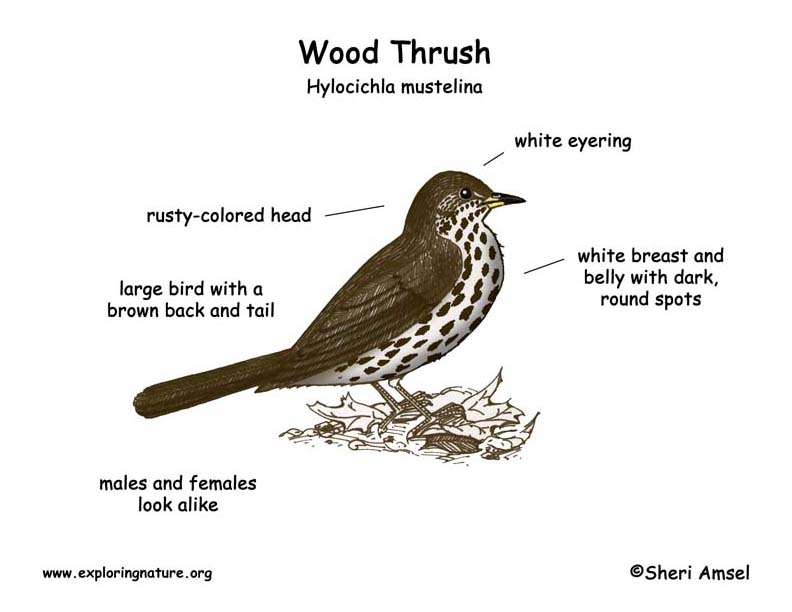

They breed in eastern North America, from southern Ontario to Nova Scotia and south to northern Florida, west to Texas and South Dakota.
They live in deciduous forests with thick, brushy undergrowth.
They are large and brown with a rusty-colored head. They have a white breast and belly with dark, round spots. They have a white eyering. Males and females look alike.
They raise their tail over and over. They have a loud flute-like song.
They eat insects, fruit and berries.
They build a cup-shaped nest of dead leaves, grass, and bark and layer it with mud. They are hidden on a lower limb of a tree or shrub. The female lays 3 – 4 blue-green eggs.
Domain: Eukarya
Kingdom: Animalia
Phylum: Chordata
Subphylum: Vertebrata
Class: Aves
Order: Passeriformes
Family: Turdidae
Genus: Hylocichla
Species: H. mustelina
When you research information you must cite the reference. Citing for websites is different from citing from books, magazines and periodicals. The style of citing shown here is from the MLA Style Citations (Modern Language Association).
When citing a WEBSITE the general format is as follows.
Author Last Name, First Name(s). "Title: Subtitle of Part of Web Page, if appropriate." Title: Subtitle: Section of Page if appropriate. Sponsoring/Publishing Agency, If Given. Additional significant descriptive information. Date of Electronic Publication or other Date, such as Last Updated. Day Month Year of access < URL >.
Amsel, Sheri. "Thrush (Wood)" Exploring Nature Educational Resource ©2005-2024. December 13, 2024
< http://exploringnature.org/db/view/Thrush-Wood >

